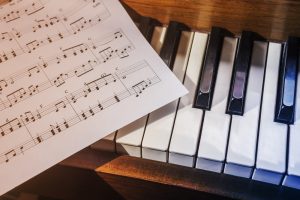Table of Contents
Come join us now, and enjoy playing your beloved music and browse through great scores of every level and styles!
Can’t find the songbook you’re looking for? Please, email us at: sheetmusiclibrarypdf@gmail.com We’d like to help you!
Ubi caritas – Ola Gjeilo, Piano Arr. sheet music, Noten, partitura, spartiti, partition, 楽譜
Best Sheet Music download from our Library.
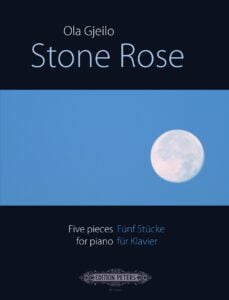
Please, subscribe to our Library.
If you are already a subscriber, please, check our NEW SCORES’ page every month for new sheet music. THANK YOU!
Who is Ola Gjeilo?
Ola Gjeilo (born 1978) is a Norwegian composer and pianist known for his contemporary choral, vocal, and instrumental music. His works are widely performed around the world, particularly in the choral community.
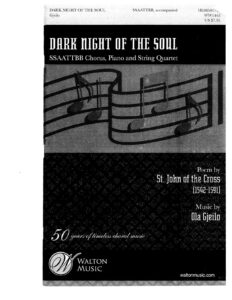
Key Facts About Ola Gjeilo:
- Full Name: Ola Gjeilo (pronounced Yay-lo).
- Born: 1978 in Skien, Norway.
- Musical Style: His compositions often blend minimalist, cinematic, and neo-romantic elements, with lush harmonies and expressive melodies.
- Influences: Jazz, film music, and sacred choral traditions.
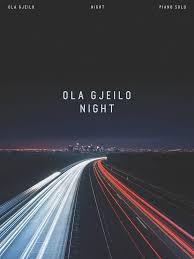
Popular Works:
- Choral Music:
- Northern Lights
- The Spheres (from Sunrise Mass)
- Tundra
- Ubi Caritas
- Dark Night of the Soul
- Piano & Orchestral:
- Stone Rose (piano album)
- Piano Improvisations
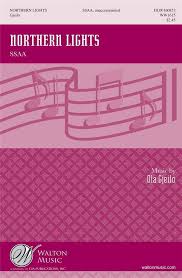
Career Highlights:
- Studied at the Royal College of Music in London and the Juilliard School in New York.
- Works frequently performed by top choirs (e.g., The Choir of Trinity College Cambridge, VOCES8).
- Frequently collaborates with Tenebrae and Phoenix Chorale.
Gjeilo’s music is soothing, atmospheric, and emotionally powerful, making him one of the most beloved living choral composers today.
Browse in the Library:
Or browse in the categories menus & download the Library Catalog PDF:
Ubi Caritas, by Ola Gjeilo

Ola Gjeilo’s Ubi Caritas is one of his most beloved and frequently performed choral works. It’s a modern yet timeless setting of the traditional Latin text (“Ubi caritas et amor, Deus ibi est” — “Where charity and love are, God is there”), often sung during Maundy Thursday liturgies but cherished year-round for its serene beauty.
Key Features of Gjeilo’s Ubi Caritas:
- Minimalist & Meditative:
- Built on repeating, flowing patterns in the piano (or strings) with lush harmonies.
- The choral writing is homophonic (chords moving together) with gentle dissonances resolving into warmth.
- Cinematic Quality:
- Gjeilo’s background in film music shines through—the piece feels expansive and evocative, like a sacred soundtrack.
- Flexible Scoring:
- Originally for SATB choir and piano (or strings).
- Also arranged for SSAA/TTBB choirs and even solo cello versions.
Notable Recordings:
- Tenebrae (Nigel Short) – Listen on YouTube
- Phoenix Chorale (Charles Bruffy) – Grammy-winning ensemble.
- The Choir of Trinity College Cambridge – Features Gjeilo’s improvisational piano accompaniment.
Why It Stands Out:
- Unlike Maurice Duruflé’s more traditional Gregorian-inspired Ubi Caritas, Gjeilo’s version is fresh and atmospheric, appealing to both classical and contemporary audiences.
- Perfect for weddings, memorials, or contemplative worship.
Ola Gjeilo’s Ubi Caritas is a masterclass in accessible yet sophisticated harmonic language, blending modal purity with contemporary chromatic warmth. Here’s a breakdown of its key elements:
1. Modal Foundation with Jazz-Influenced Color
- Base Mode: Primarily Dorian mode on D (D-E-F-G-A-B-C), giving it a serene, slightly medieval quality.
- Jazz-Inflected Harmonies:
- Adds major 7ths, added 9ths, and suspended chords (e.g., Dsus2 → D major).
- Piano arpeggiations often imply quartal harmony (stacked 4ths) for an open, cinematic sound.
2. Harmonic Progression & Voice Leading
The opening phrase (“Ubi caritas et amor”) revolves around:
Dm → B♭/F → F/C → C → Dm
- B♭/F (F7sus without the 3rd): Creates a gentle tension, resolving down to F/C (a first-inversion F major).
- Plagal Cadence Feel: The C → Dm motion (IV–i in D Dorian) avoids traditional V–i closure, sustaining a meditative mood.
3. Chromatic Warmth
Gjeilo spices diatonic harmony with subtle chromatic shifts:
- Inner Voice Movement:
- In the phrase “Deus ibi est”, the alto line descends chromatically (e.g., A → G♯ → G♮ → F♯), softening cadences.
- Unexpected Major Chords:
- Brief shifts to B♭ major (borrowed from D Aeolian) for emotional luminosity.
4. Ostinato & Repetition
- The piano’s repeating 8-note pattern (D-E-F-G-A-B-C-D) anchors the piece in D Dorian while the harmonies shift above it.
- Minimalist Influence: The static bass (often pedal D) and cyclical patterns evoke Arvo Pärt’s tintinnabulation, but with Gjeilo’s signature lyricism.
5. Text Painting
- “Deus ibi est” (“God is there”) culminates on a bright D major chord (picardy-third effect), symbolizing divine light.
- The final Amen cadence uses planing (parallel chords) for a transcendent fade-out.
Comparison to Gjeilo’s Other Works
- Vs. The Spheres: Ubi Caritas is harmonically simpler, focusing on purity, while The Spheres uses more dense, jazz-cluster harmonies (e.g., major 7ths with added 2nds).
- Vs. Dark Night of the Soul: The latter is darker, with Phrygian mode and bolder chromaticism (e.g., E♭m → C♭maj7).
Why It Works So Well
Gjeilo’s genius lies in making complex harmony feel intuitive and emotional. The piece is performable by amateur choirs yet harmonically rich enough for professionals—a hallmark of his style.
Ola Gjeilo – Gjeilo: Night (piano)
Tracklist:
00:00 – Firefly 02:33 – Sleepless 05:31 – Still 07:45 – City Lights 10:21 – Night Rain 12:57 – Before Dawn 17:03 – Aeon 19:51 – Crystal Sky 23:30 – Quiet Streets 27:08 – Sundown 28:15 – Moonrise 30:10 – Shadows 33:20 – Eclipse 36:44 – Aurora 40:44 – Dreaming 43:10 – Polar 46:05 – Skyline 48:30 – Nocturnal
Ola Gjeilo’s Night for solo piano is a mesmerizing and introspective piece that showcases his signature blend of minimalism, jazz harmony, and cinematic atmosphere. Part of his 2007 album Stone Rose, it’s one of his most beloved piano works, often compared to the lyrical simplicity of Einaudi but with Gjeilo’s distinctive Nordic melancholy and harmonic depth.
Musical Analysis of Night:
1. Harmonic Language
- Tonality: Centered in E minor, but with fluid modal shifts (Dorian and Aeolian inflections).
- Chord Progressions:
- Built on a repeating 4-chord ostinato: Em → Cmaj7 → G/B → D/F# (i–VI–IV–V in E minor, with smooth inversions).
- Jazz-influenced extensions: The Cmaj7 and G/B chords add warmth, while the bass movement (E–C–B–D) creates a lyrical, descending contour.
- Unexpected shifts: Brief modulations to G major (relative major) for a fleeting sense of hope before returning to E minor’s introspection.
2. Structure & Form
- Minimalist repetition with variation: The piece follows a theme-and-variations approach, where the core progression repeats but grows in intensity.
- Three main sections:
- Opening (0:00): Gentle, sparse melody over the ostinato.
- Middle (1:30): Increased rhythmic motion, left-hand octaves adding depth.
- Climax (2:50): Forte dynamic, fuller chords, and a soaring right-hand line before subsiding back into quietude.
3. Texture & Technique
- Left hand: Arpeggiated chords and broken octaves, creating a pulsing, wave-like foundation.
- Right hand: A simple but haunting stepwise melody, often doubled in octaves for richness.
- Pedaling: Heavy use of sustain pedal for a blurred, dreamlike effect.
4. Emotional Arc
- Mood: Nocturnal, contemplative, and slightly mournful—like a solitary night journey.
- Dynamic shaping: Swells and fades mimic breathing, making it deeply expressive.
Comparisons to Gjeilo’s Other Piano Works
- Vs. Prelude (from Stone Rose): Prelude is brighter, in C major, with a more uplifting, pastoral quality.
- Vs. The River (from Piano Improvisations): The River is more fluid and improvisational, with jazzier harmonies.
- Vs. Dark Night of the Soul (choral version): Shares the same melancholic beauty but is harmonically denser.
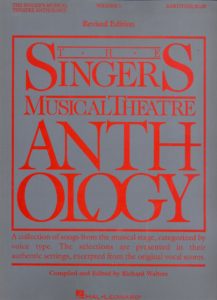
Performance Tips (If You’re Playing It!)
- Focus on touch: The melody should sing legato over the softer left hand.
- Rubato: Gjeilo encourages slight tempo flexibility for emotional phrasing.
- Pedal control: Avoid muddiness—re-pedal subtly with harmonic changes.
- Accessible yet profound: The repeating structure makes it easy to learn, but the emotional depth keeps it rewarding.
- Perfect for: Late-night listening, film scores, or as a calming recital piece.
Ola Gjeilo’s Night—like much of his piano music—blends composed structure with an improvisational spirit, making it feel fresh and spontaneous. Here’s how he weaves improvisational elements into the piece:
1. Jazz-Inspired Harmonic Freedom
- Chord Substitutions:
The core progression (Em → Cmaj7 → G/B → D/F#) could easily be jazzed up with: - Em7 instead of Em (adding a D for a smokier sound).
- Cmaj9 or C6/9 for extra color (Gjeilo often layers extensions in performances).
- D/F# → Dsus4 → D for a suspended, unresolved feel.
- Walking Bass Potential:
In live performances, Gjeilo sometimes improvises descending bass lines between chords (e.g., E→D→C→B under Em→C→G).
2. Melodic Embellishment
- Ornamentation:
The right-hand melody is simple but ripe for grace notes, turns, or mordents (especially in repeats). For example: - The opening E–F#–G motif could be played with a light upper neighbor (E–F#–G–F#–G).
- Improvised Countermelodies:
In the climax (2:50), Gjeilo sometimes adds rolling arpeggios or octave leaps in the right hand for drama.
3. Rhythmic Fluidity
- Rubato as Improvisation:
The piece relies on elastic tempo—stretching phrases like a singer (e.g., lingering on the Cmaj7 before resolving). - Syncopation:
The left-hand arpeggios can shift to off-beat accents (e.g., delaying the bass note by an 8th note) for a jazzier pulse.
4. Dynamic & Textural Spontaneity
- “Live” Pedaling:
Gjeilo often varies pedal depth between performances—sometimes letting chords blur, other times clearing the haze for clarity. - Octave Displacement:
In improvised versions, he might play the melody an octave higher suddenly for a brighter contrast.
5. Cadenzas & Extended Passages
While Night is through-composed, Gjeilo’s live performances sometimes include:
- Piano “Outros”: Improvised codas that loop the progression with new figurations (e.g., cascading 16th notes).
- Modal Interpolations: Briefly drifting into E Phrygian (F natural) or E harmonic minor (D#) for tension.
How to Practice Improvising on Night
- Start Small: Add a single grace note to the melody each time you repeat.
- Vary the Left Hand: Swap arpeggios for block chords or root-5th-octave patterns.
- Steal from Gjeilo: Listen to his live recordings (e.g., Stone Rose)—he rarely plays it the same way twice!
Why It Feels Improvised (Even When It’s Not)
Gjeilo’s background in jazz and film scoring lets him mimic improvisation through:
- “Unfinished” Phrases: Melodies often pause on the 9th or 7th of a chord (no forced resolution).
- Ambiguous Endings: The piece fades out softly, as if the performer could keep going forever.
